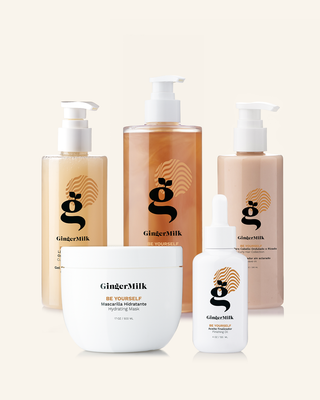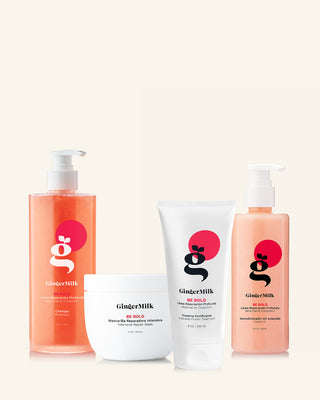At first glance we can't see what's going on underneath the scalp, but there is a scientific explanation and here we will tell you all about it!... So you can better understand what's going on with your hair and how to treat it.
Each hair grows in a small cavity called a hair follicle, located in the dermis. All the substances necessary for hair growth reach the base of the follicles in the papillary zone which is composed of a cellular tissue and multiple blood vessels connected to it, which transmit all the nutrients that we consume, which helps its growth. However, having a lack of vitamins, minerals, proteins and antioxidants, has a lot to do with our diet (as I commented in a previous blog), having low levels of omega 3, omega 9, Vitamin B, D, E and others for example, could affect the molecular structure of the hair and cause hair loss, among other factors.
Hair remains naturally lubricated thanks to its sebaceous glands, a fatty substance they produce, known as sebum. These are attached to each follicle and when functioning properly, prevent visible disorders such as greasy or dry hair.
As the hair shaft grows, it leaves the follicle and crosses the barrier of the epidermis and becomes visible.

The outer part of the hair is covered by the cuticle, which is rigid, transparent, formed by cells placed as layers with the appearance of scales fitted one on top of the other. It is responsible for protecting the hair, its shine and texture. When your hair is healthy, its cuticles (that scale-like appearance) are kept closed and compacted, which makes the hair shiny and soft. When the opposite happens, the cuticles open and do not allow the hair to be properly protected and that is when we have visibly damaged hair with a dull and rough appearance. This happens with long hours of exposure to the sun and the excessive use of heat tools, without prior protection from a product such as Be Wise, which acts as a thermal and sun protector.
Next, going deeper inside the strand, we find the cortex composed of longitudinal cells that, being many of them grouped together, support the core of the strand, giving strength, resistance, elasticity, shape, humidity and color to the hair, since it is there where the melanin is found. It is composed of fibers, mass and a large reserve of hard keratin, occupying an area of 70%-80% of the hair structure.
In the center of the strand is the medulla, where the soft keratin is concentrated, the fat from the sebaceous glands and substances from the root are transported; its structure determines the thickness of the hair.








